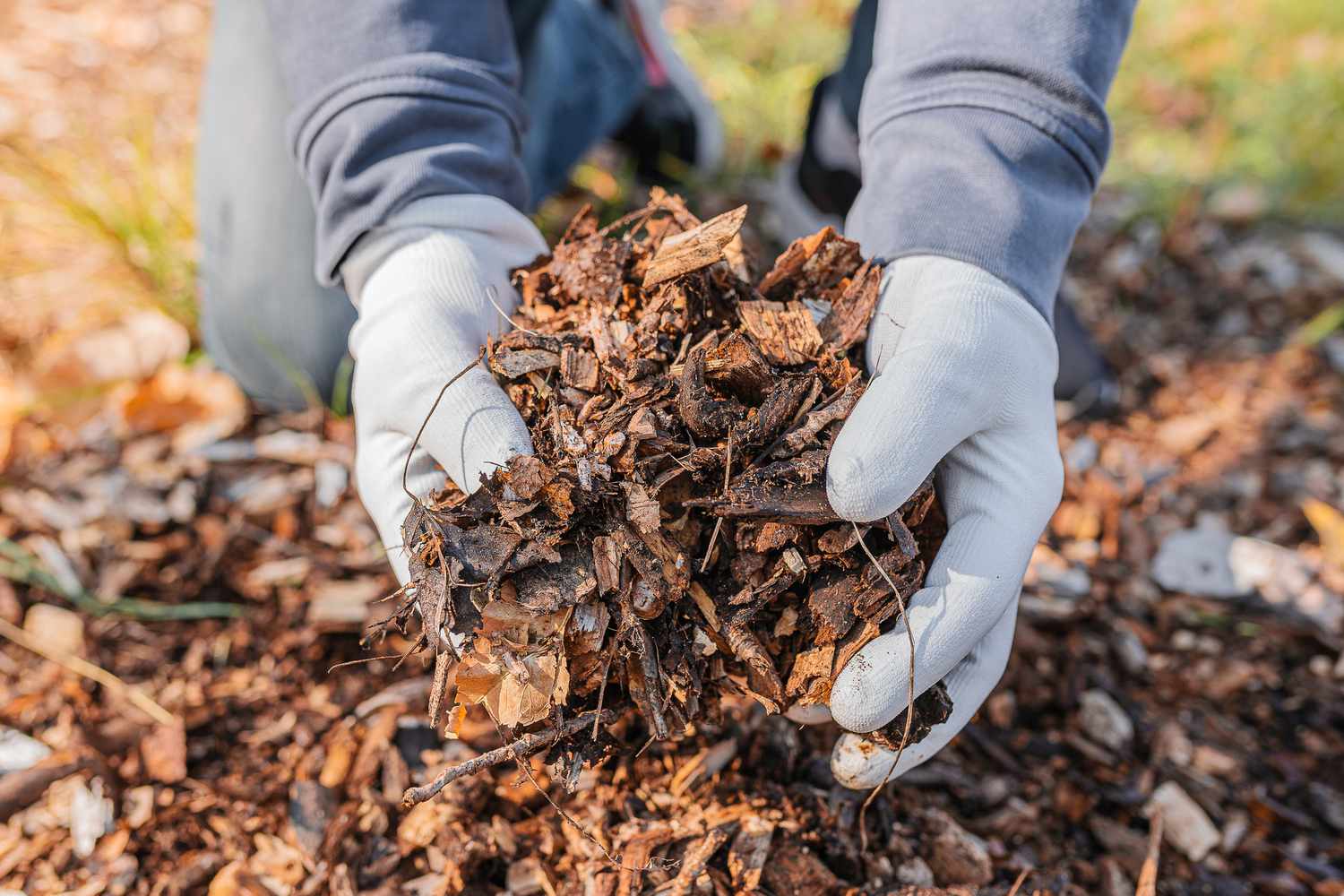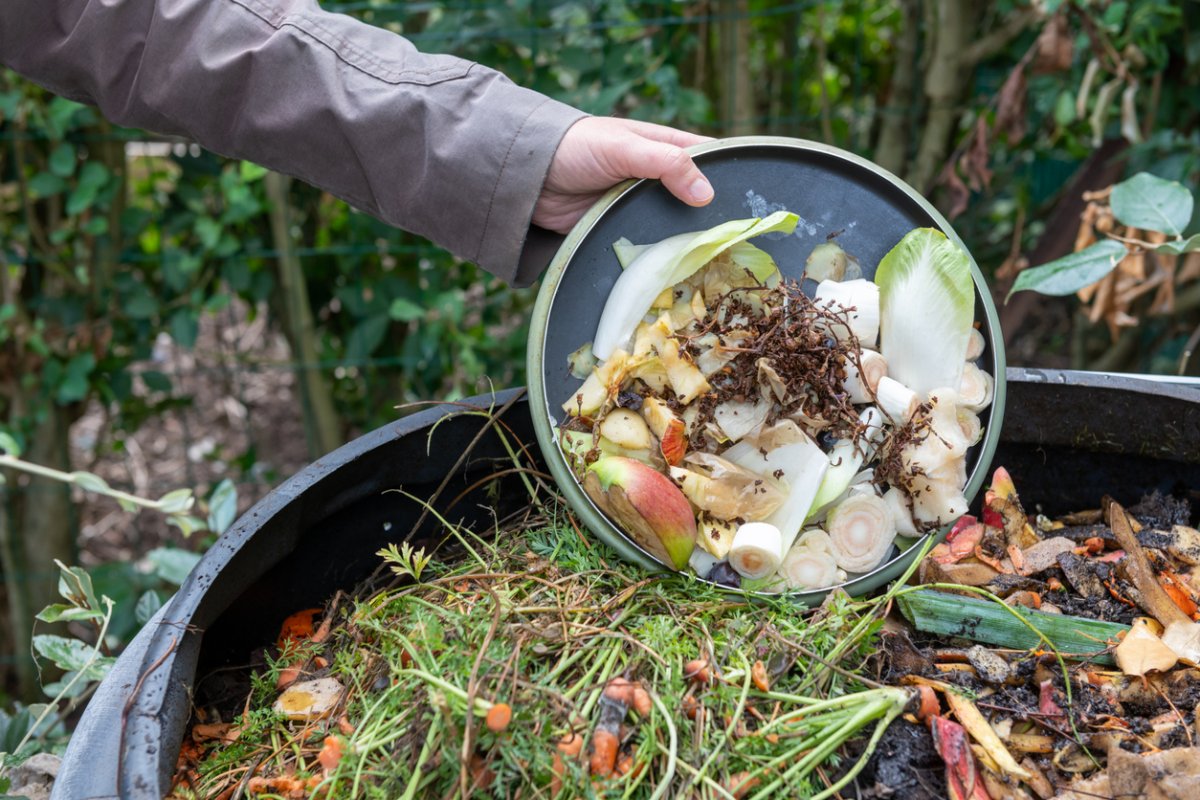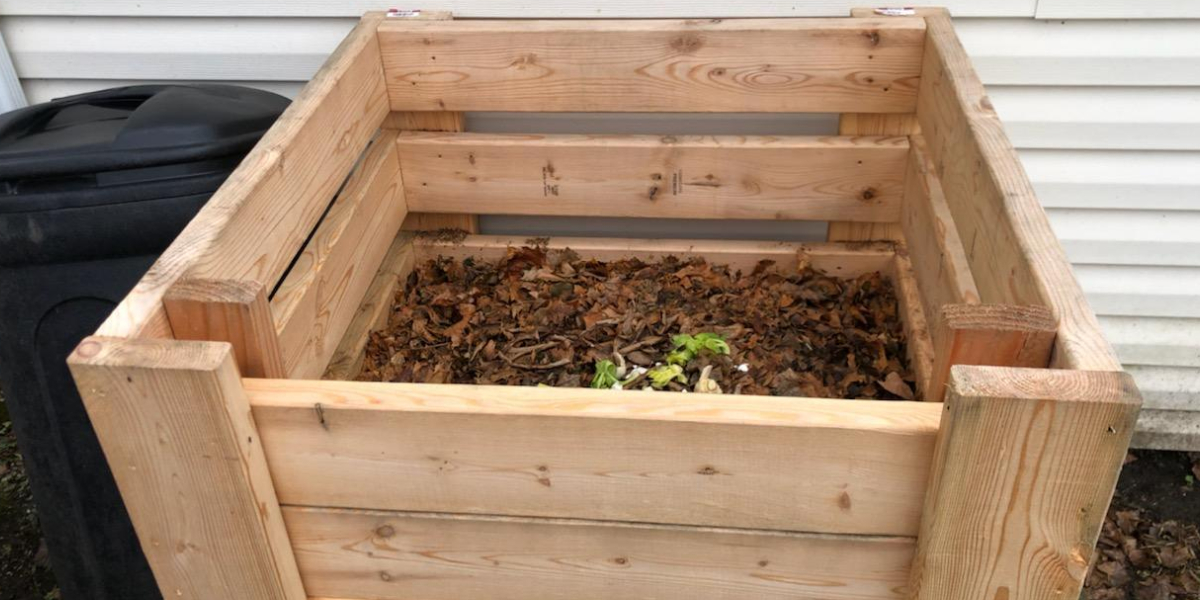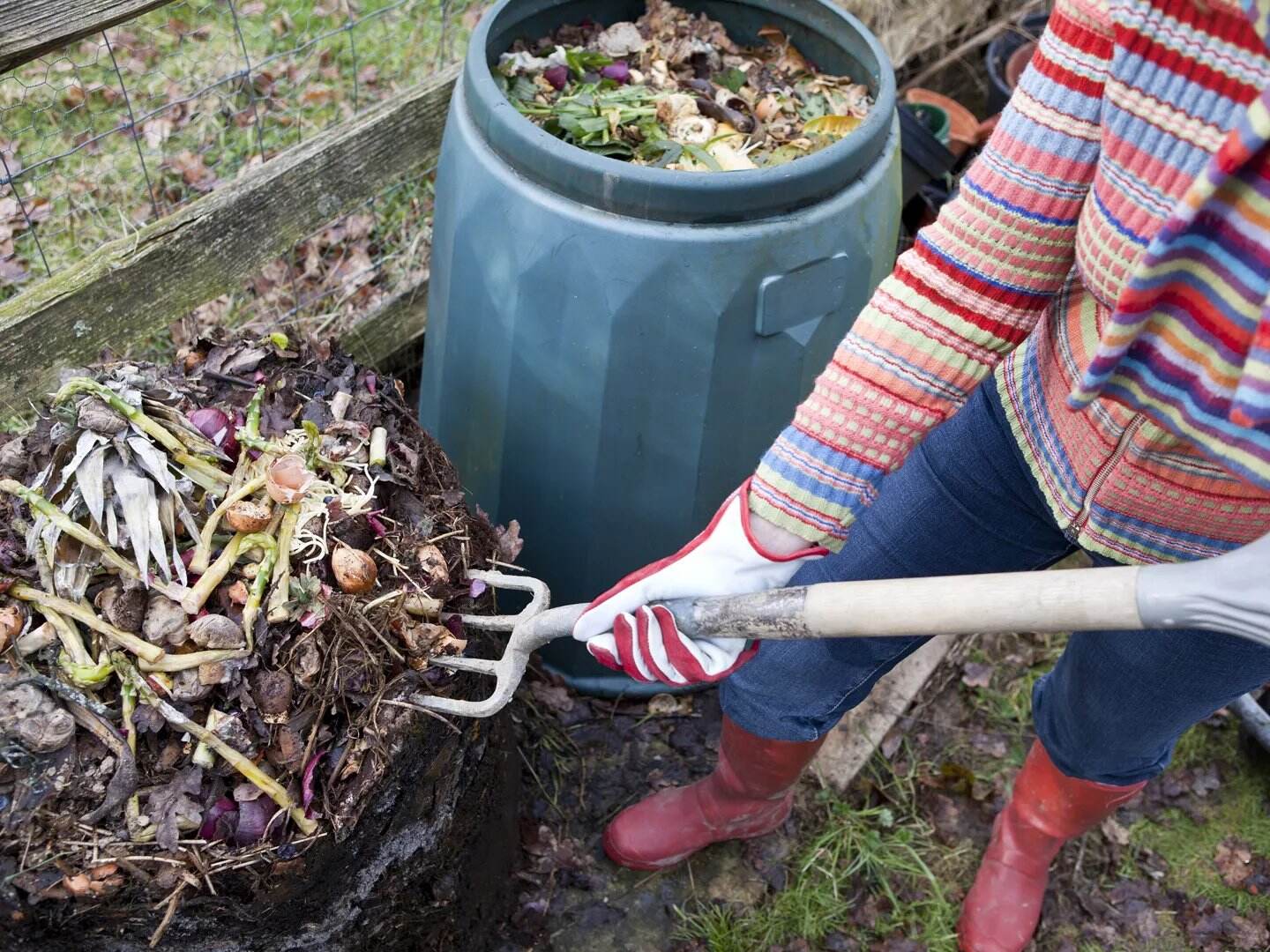Home>Gardening Tips and Tricks>Eco-Friendly Gardening>How To Make Compost From Leaves


Eco-Friendly Gardening
How To Make Compost From Leaves
Modified: January 22, 2024
Learn how to make eco-friendly compost from leaves for your garden. Discover the benefits of composting and get tips for successful and sustainable gardening.
(Many of the links in this article redirect to a specific reviewed product. Your purchase of these products through affiliate links helps to generate commission for Chicagolandgardening.com, at no extra cost. Learn more)
Table of Contents
Introduction
Welcome to the world of eco-friendly gardening! If you’re looking for ways to reduce waste, improve soil quality, and promote sustainable practices in your garden, then composting is the answer. Composting is a natural process that transforms organic waste into nutrient-rich humus, which can be used to nourish plants and improve overall soil health.
One of the most readily available and abundant sources of organic material for composting is leaves. Leaves are rich in carbon and essential nutrients, making them an excellent addition to your compost pile. Plus, using leaves for composting helps reduce the amount of waste sent to landfills, reducing your carbon footprint and promoting a greener environment.
Whether you are a seasoned gardener or just starting out, this article will guide you through the process of making compost from leaves. We will cover everything from gathering and collecting leaves to preparing them for composting, building a leaf compost pile, maintaining the composting process, and using the finished leaf compost in your garden.
By the end of this article, you will have the knowledge and tools to create your own nutrient-rich leaf compost, providing a sustainable and eco-friendly solution for your gardening needs.
Why Use Leaves for Composting
Leaves are an excellent source of organic material for composting for several reasons:
- Abundance: Leaves are abundant, especially during the fall season when trees shed their foliage. With a little effort, you can gather a significant amount of leaves for composting, making it a sustainable and cost-effective option.
- Carbon-rich: Leaves have a high carbon content, which is essential for the composting process. Carbon-rich materials help create a balanced ratio of carbon to nitrogen, known as the C:N ratio, which is necessary for the decomposition of organic matter and the production of nutrient-rich compost.
- Nutrient source: Leaves contain essential nutrients such as potassium, phosphorus, and trace minerals. These nutrients are released as the leaves break down during composting, enriching the compost and enhancing soil fertility.
- Improves soil structure: Leaf compost improves soil structure by enhancing its ability to hold water, improving drainage, and preventing compaction. The organic matter in the compost helps create a loose and crumbly soil texture, ideal for healthy root growth and nutrient uptake by plants.
- Reduces waste: Using leaves for composting helps divert organic waste from landfills, where it may produce harmful greenhouse gases. By composting leaves, you contribute to waste reduction and promote a greener environment.
It’s important to note that not all types of leaves are suitable for composting. Some leaves, such as those from walnut trees, eucalyptus, and cedar trees, contain natural compounds that can inhibit plant growth. It’s best to avoid composting these types of leaves or use them sparingly in your compost pile.
Now that we understand the benefits of using leaves for composting let’s explore how to gather and collect them effectively.
Gathering and Collecting Leaves
Gathering and collecting leaves for composting is an important step in the process. Here are some tips to help you effectively gather and collect leaves:
- Rake and Handpick: Use a rake or your hands to gather fallen leaves from your lawn, garden, or nearby areas. Make sure to collect only dry leaves as wet leaves can become matted and compacted, slowing down the composting process.
- Borrow a Leaf Blower: If you have a large yard or a lot of trees, using a leaf blower can help you gather leaves more efficiently. Blow the leaves into piles and then gather them up with a rake or by hand.
- Ask for Donations: If you don’t have enough leaves in your own yard, consider asking neighbors, friends, or local parks if you can collect their fallen leaves. Many people are happy to have someone take care of their leaf debris.
- Leaf Collection Programs: Some municipalities have leaf collection programs where they collect and compost leaves from residents. Check with your local government to see if such a program exists in your area.
- Leaf Vacuum/Chipper: If you have a large amount of leaves or want to shred them for faster decomposition, consider using a leaf vacuum or chipper. These machines suck up leaves and can shred them into smaller pieces, making them easier to handle and speeding up the composting process.
Remember to avoid using leaves treated with pesticides or herbicides, as these chemicals can persist in your compost and potentially harm your plants. If you are unsure about the source of the leaves, it’s best to err on the side of caution and choose leaves from organic sources.
Once you have gathered your leaves, it’s time to prepare them for composting. This involves shredding or chopping the leaves into smaller pieces, which we will discuss in the next section.
Preparing Leaves for Composting
Before adding leaves to your compost pile, it’s beneficial to prepare them by shredding or chopping them into smaller pieces. This process helps speed up decomposition and promotes the even distribution of moisture and airflow throughout the compost pile. Here are a few methods to prepare leaves for composting:
- Using a Lawn Mower: One of the easiest ways to chop leaves is by running over them with a lawn mower. Simply set the mower to a high setting and mow over a layer of leaves. This will shred the leaves into smaller pieces, making them easier to incorporate into your compost pile.
- Using a Leaf Shredder: If you have a large amount of leaves or prefer a finer texture, you could invest in a leaf shredder. Leaf shredders are designed specifically to break down leaves into smaller pieces, ensuring faster decomposition and a more uniform compost mix.
- Manually Shredding: Alternatively, you can manually shred leaves by hand. Place a few handfuls of leaves at a time on a hard surface, such as a tarp or concrete, and use a sharp shovel or machete to chop them into smaller pieces. Although this method requires more effort, it can be effective for smaller quantities of leaves.
Remember, the goal is to break down the leaves into smaller pieces, but they don’t need to be finely shredded. The smaller the leaf pieces, the quicker they will decompose and integrate into the compost pile.
Once you have shredded or chopped the leaves, it’s time to start building your leaf compost pile. We will explore how to do this in the next section.
Building a Leaf Compost Pile
Building a leaf compost pile is a straightforward process that involves layering the shredded leaves with other organic materials to create an optimal environment for decomposition. Follow these steps to build your leaf compost pile:
- Select a Location: Choose a well-drained area in your garden for your compost pile. Ideally, the location should receive partial sunlight to help speed up the composting process.
- Create the Base Layer: Start by creating a base layer of coarse materials such as twigs or small branches. This layer helps promote airflow and prevents the bottom of the pile from becoming too compact. Aim for a layer that is around 6 inches thick.
- Add the Shredded Leaves: Layer a generous amount of shredded leaves on top of the base layer. Aim for a thickness of about 6 to 8 inches. Ensure the leaves are evenly spread out, avoiding large clumps or air pockets.
- Add Nitrogen-Rich Materials: To balance the carbon-to-nitrogen ratio in your compost pile, add nitrogen-rich materials such as grass clippings, kitchen scraps, or manure. Layer these materials on top of the shredded leaves, aiming for a thickness of 1 to 2 inches.
- Alternate Layers: Continue layering shredded leaves and nitrogen-rich materials until you have used up all your shredded leaves. Each layer of leaves should be followed by a layer of nitrogen-rich material.
- Moisten the Pile: After each layer, moisten the pile with water to ensure a proper level of moisture. The compost pile should be damp, similar to a wrung-out sponge. Avoid overwatering, as excessive moisture can prevent proper airflow and result in a slimy, anaerobic compost pile.
- Cover the Pile: Finally, cover the compost pile with a tarp or a layer of straw or leaves. This cover helps retain moisture and warmth, promoting an ideal environment for decomposition.
It’s important to remember that maintaining the compost pile is crucial for successful decomposition. Regularly turn the pile to aerate it and promote even breakdown of materials. Additionally, monitor the moisture levels and adjust as necessary by adding water or dry materials.
With regular maintenance and adequate time, your leaf compost pile will transform into nutrient-rich compost that can be used to enhance the health and productivity of your garden. Next, we will explore how to maintain the composting process to ensure optimal results.
Maintaining the Composting Process
Maintaining the composting process is essential to ensure proper decomposition and the production of high-quality compost. Here are some key steps to help you effectively maintain your compost pile:
- Aerate the Pile: Regularly turning or aerating the compost pile helps introduce oxygen and promote the decomposition process. Use a pitchfork or compost aerator to mix the outer layers of the pile into the center. Aim to turn the pile at least once every two to three weeks.
- Monitor Moisture Levels: Check the moisture content of your compost pile regularly. It should be moist, similar to a wrung-out sponge. If the pile becomes too dry, add some water to ensure adequate moisture. Conversely, if the pile becomes too wet, add dry materials such as shredded leaves or straw to absorb excess moisture.
- Balance the C:N Ratio: Maintain a balanced carbon-to-nitrogen ratio by adding nitrogen-rich materials periodically. Grass clippings, kitchen scraps, coffee grounds, or aged manure are excellent sources of nitrogen that can help speed up the decomposition process.
- Avoid Adding Diseased or Pest-infested Materials: It’s important to avoid adding diseased plants or pest-infested materials to your compost pile. High temperatures reached during the composting process may not be enough to kill certain pathogens or pests. Dispose of these materials separately to prevent the spread of diseases or pests in your garden.
- Cover the Pile: Keep your compost pile covered to retain moisture and heat. This helps accelerate decomposition and prevent excess moisture loss during rainy periods. However, make sure to uncover the pile occasionally to allow airflow and prevent the buildup of anaerobic conditions.
- Be Patient: Composting is a natural process that takes time. Depending on various factors such as temperature, moisture levels, and the types of materials used, it can take anywhere from a few months to a year for the compost to fully mature. Be patient and continue maintaining the pile to achieve the best results.
Regular monitoring and maintenance of your compost pile will ensure you are on the path to producing nutrient-rich compost that your plants will love. Once the composting process is complete, it’s time to reap the rewards and utilize the finished leaf compost in your garden, which we will explore in the next section.
Using Finished Leaf Compost
Congratulations! You now have a batch of finished leaf compost ready to use in your garden. Here are some great ways to incorporate this nutrient-rich compost into your gardening practices:
- Soil Amendment: Mix the finished leaf compost into your garden soil to improve its fertility and structure. Spread a layer of compost on top of the soil and gently work it into the top few inches. This will add organic matter, improve drainage, and enhance nutrient retention, creating an optimal environment for plant growth.
- Potting Mix: Create a homemade potting mix by combining the finished leaf compost with other ingredients such as garden soil, perlite, and coconut coir. This will provide a nutrient-rich medium for your potted plants, ensuring healthier growth and abundant yields.
- Top Dressing: Use the finished leaf compost as a top dressing around existing plants. Gently spread a thin layer of compost around the base of the plants, being careful not to touch the stems. This will gradually release nutrients into the soil, improve moisture retention, and suppress weed growth.
- Compost Tea: Create a compost tea by soaking a bag of finished leaf compost in a bucket of water. Allow it to steep for a few days, stirring occasionally. Use this nutrient-rich liquid to water your plants or as a foliar spray to provide a boost of nutrients and enhance overall plant health.
- Seed Starting Mix: Mix the finished leaf compost with vermiculite or coconut coir to create a lightweight seed starting mix. This will provide young seedlings with a nutrient-rich environment, promoting strong root development and healthy growth.
- Mulch: Use the finished leaf compost as mulch around your plants. Spread a layer of compost around the base of your plants to help suppress weeds, conserve moisture, regulate soil temperature, and provide a slow release of nutrients as it breaks down over time.
Remember, when using finished compost, it’s crucial to properly sterilize the compost before using it in indoor pots or seed trays to avoid introducing harmful pathogens into your growing environment. Sterilize the compost by baking it in the oven at 180°F (82°C) for 30 minutes, or using a compost thermometer to ensure it reaches a temperature of at least 140°F (60°C) for a sustained period.
By incorporating the finished leaf compost into your gardening practices, you are enriching your soil, improving plant health, and reducing the need for synthetic fertilizers. Enjoy the benefits of your hard work and continue the cycle of sustainability by incorporating organic materials into your compost pile for future use.
Conclusion
Creating compost from leaves is a fantastic way to promote eco-friendly gardening practices while enriching your soil and reducing waste. By utilizing the abundance of leaves available during the fall season, you can turn this organic material into nutrient-rich compost that will benefit your garden in numerous ways.
In this article, we discussed the benefits of using leaves for composting, such as their abundance, carbon-rich composition, and ability to improve soil structure. We explored how to gather and collect leaves efficiently, ensuring that you have an ample supply for composting. Additionally, we covered the importance of preparing the leaves for composting by shredding or chopping them into smaller pieces.
Building a leaf compost pile involves layering the shredded leaves with nitrogen-rich materials, maintaining proper moisture levels, and regularly aerating the pile. These practices help create an optimal environment for decomposition, ensuring the production of high-quality compost.
Finally, we explored various ways to utilize the finished leaf compost, such as amending garden soil, creating potting mixes, using it as a top dressing or mulch, and brewing compost tea. These applications provide a wealth of benefits to your plants, promoting healthier growth, improved nutrient uptake, and higher yields.
As you continue your eco-friendly gardening journey, remember the importance of patience and regular maintenance. Composting is a natural process that takes time, but with dedication and proper care, you will reap the rewards of nutrient-rich compost that nourishes your garden and reduces your environmental impact.
So, roll up your sleeves, gather those fallen leaves, and embark on the journey of creating your own sustainable and eco-friendly leaf compost. Your garden and the environment will thank you for it!










